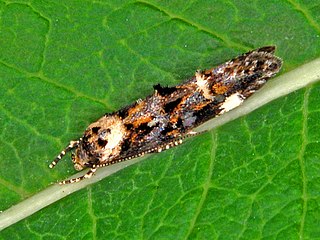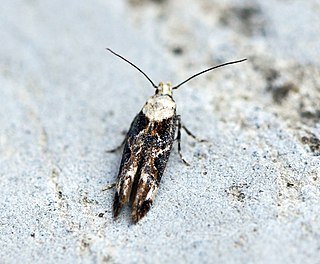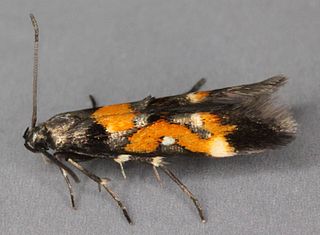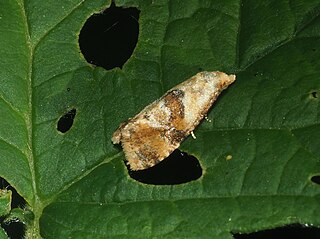
Sandpipers are a large family, Scolopacidae, of waders. They include many species called sandpipers, as well as those called by names such as curlew and snipe. The majority of these species eat small invertebrates picked out of the mud or soil. Different lengths of bills enable different species to feed in the same habitat, particularly on the coast, without direct competition for food.

The European mole is a mammal of the order Eulipotyphla. It is also known as the common mole and the northern mole.

Phymatopus is a genus of moths of the family Hepialidae, which consists of around 500 species and 30 genera. The genus was erected by Hans Daniel Johan Wallengren in 1869. They can be found across Eurasia and North America. Species can be distinguished by the different morphology of male genitalia and different forewing patterns, which vary in stripe colour and size and arrangement of spots. The stripes themselves consist of spots separated by dark veins which are fringed by thin black lines from both inner and outer sides.

Pholcus phalangioides, commonly known as daddy long-legs spider or long-bodied cellar spider, is a spider of the family Pholcidae. It is also known as the skull spider, since its cephalothorax resembles a human skull. This is the only spider species described by the Swiss entomologist Johann Kaspar Füssli, who first recorded it in 1775. Its common name of "daddy long-legs" should not be confused with a different arachnid group with the same common name, the harvestman (Opiliones).

Insect morphology is the study and description of the physical form of insects. The terminology used to describe insects is similar to that used for other arthropods due to their shared evolutionary history. Three physical features separate insects from other arthropods: they have a body divided into three regions, have three pairs of legs, and mouthparts located outside of the head capsule. It is this position of the mouthparts which divides them from their closest relatives, the non-insect hexapods, which includes Protura, Diplura, and Collembola.

Mompha epilobiella is a moth in the family Momphidae found in Europe and North America.

Mompha ochraceella is a moth of the family Momphidae found in Africa, Asia and Europe.

Mompha langiella is a moth of the family Momphidae. It is found in most of Europe, except parts of the Balkan Peninsula and the Mediterranean islands.

Mompha conturbatella, also known as the fireweed mompha moth, is a moth in the family Momphidae found in Asia, Europe and North America. It was first described by Jacob Hübner in 1819.

Mompha propinquella is a moth in the family Momphidae found in Europe.

Mompha divisella is a moth in the family Momphidae. It is found from southern Scandinavia to the Caucasus and central Asia.
Mompha bradleyi is a moth in the family Momphidae found in Europe.
Mompha confusella is a moth in the family Momphidae. It found from central and southern Europe to Transcaucasia. In Europe, it has been recorded from the Czech Republic, Austria, Hungary, Slovakia, Ukraine and Russia.

Mompha sturnipennella is a moth in the family Momphidae. It is found in the Holarctic ecozone and is found in most of Europe, Siberia, the Russian Far East and Canada.

Mompha miscella is a moth in the family Momphidae, found in Asia Minor, Europe and North Africa.

Mompha locupletella is a moth in the family Momphidae that can be found in the Palearctic including Europe.
Eliachna digitana is a species of moth of the family Tortricidae. It is found from Chile to Argentina. The habitat ranges from coastal Nothofagus forests to arid uplands.

Epicephala angustisaccula is a moth of the family Gracillariidae. It is found in China (Hainan).
Udeini is a tribe in the species-rich subfamily Spilomelinae in the pyraloid moth family Crambidae. The tribe was erected by Richard Mally, James E. Hayden, Christoph Neinhuis, Bjarte H. Jordal and Matthias Nuss in 2019.

Phalonidia udana, or the loosestrife conch, is a European species of moth of the family Tortricidae, the subfamily Tortricinae, and the tribe Cochylini. It is widely distributed in the North Palaearctic but appears to be largely rare or missing in Central Europe. Previously, it was classified under the Phalonidia manniana taxon, but a recent effort to barcode all North European Lepidoptera revealed that P. udana and P. mannania are two distinct species.














